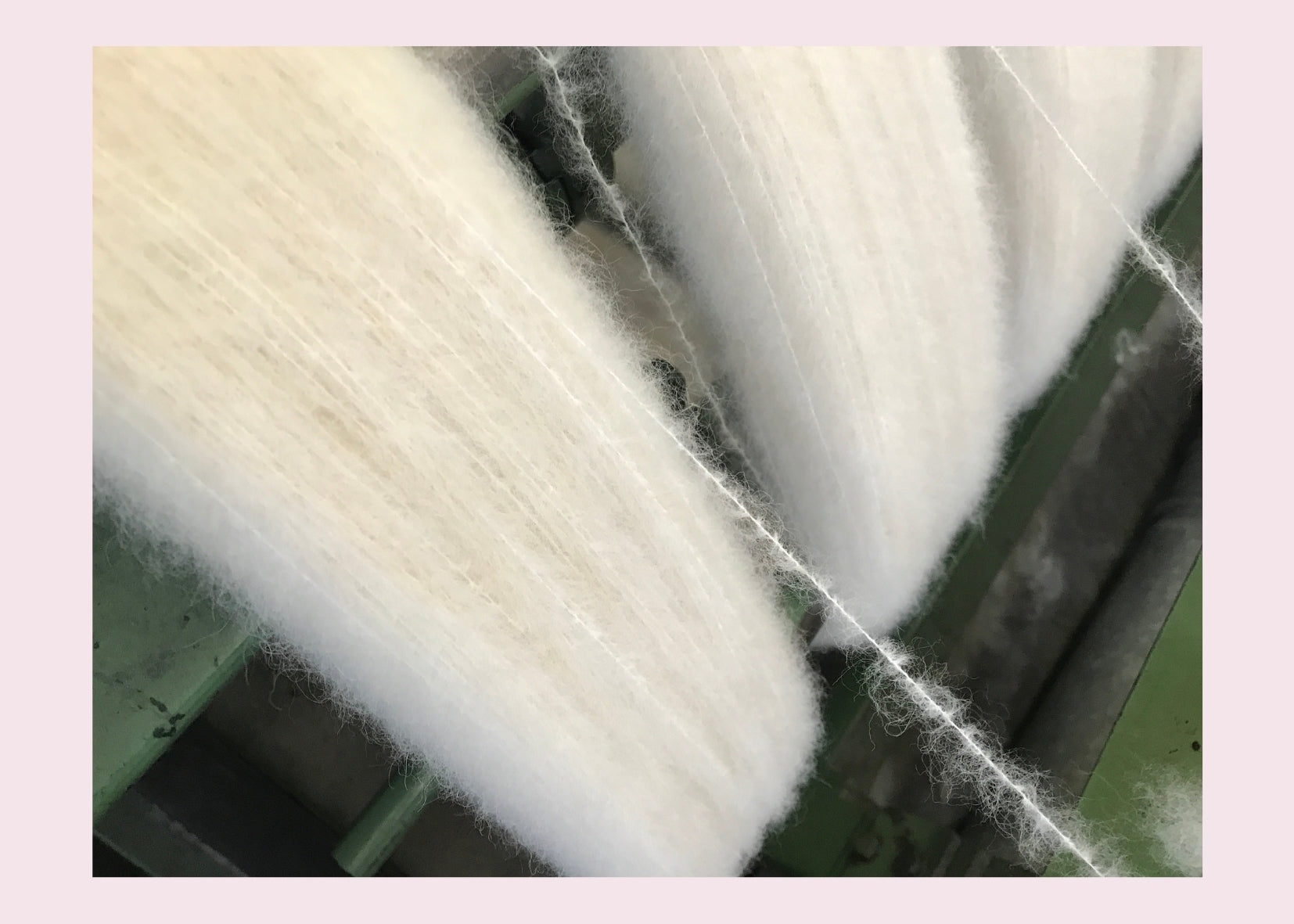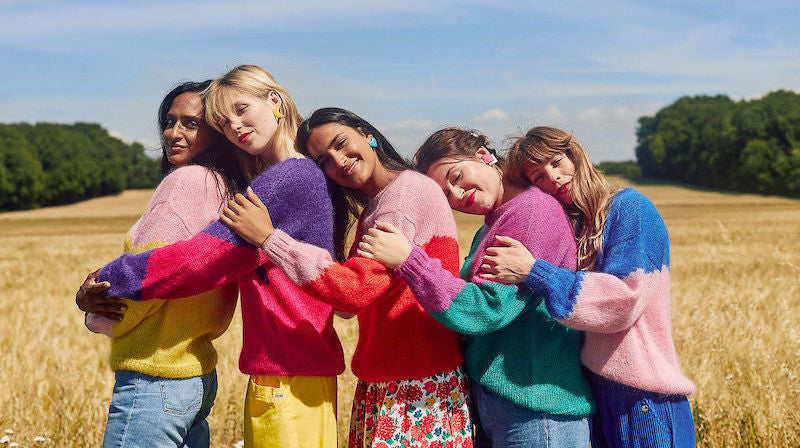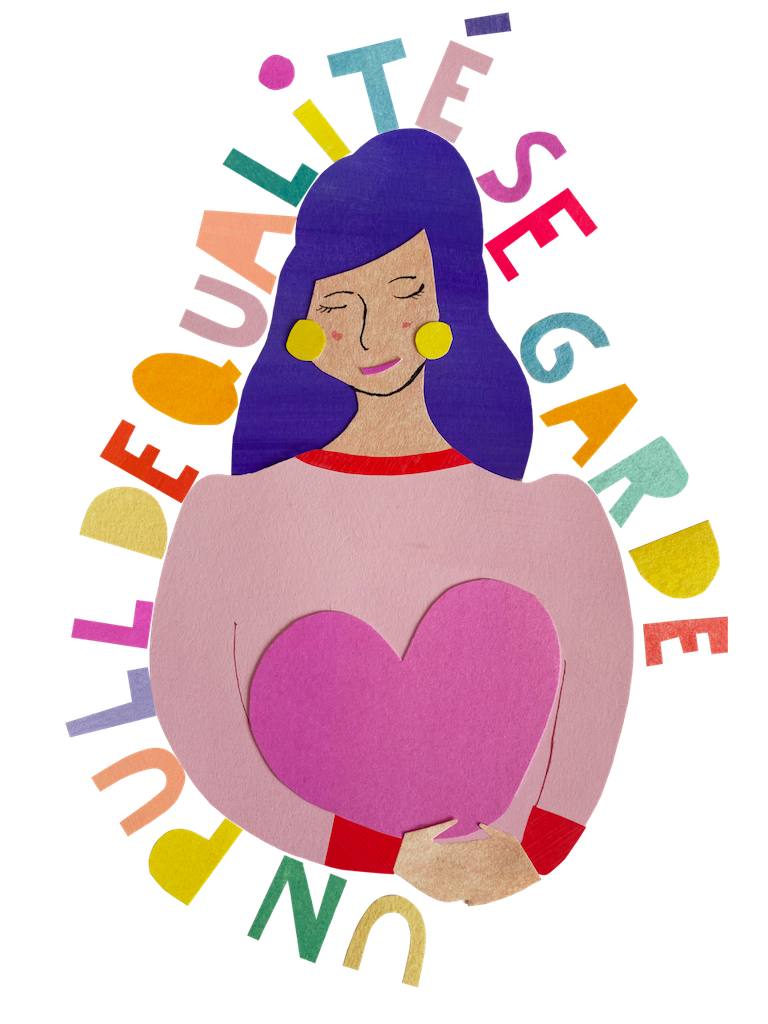At the very beginning, there's the Angora goat, bred exclusively for its white, silky, lustrous fleece. Goats are shorn 2 to 3 times a year, depending on the region. The adult Angora goat produces 3 to 6 kg of raw mohair per year.

Before the wool is spun, the hairs are sorted, washed, carded and combed. These three stages enable us to go from raw hair to a clean, "rough" strand of mohair, made up of homogeneous, well-ordered fibers.

Unlike synthetic fibers, mohair fibers come from a living material. They are therefore never homogeneous from one batch to the next, and are sensitive to humidity, temperature and even wind! Spinning them is therefore much more complex.
The spinner transforms the coarse wick into a ribbon of a certain size and composition.
The spinner transforms the coarse wick into a ribbon of a certain size and composition.

This ribbon will be spun in different ways, depending on the desired thread.
For my mohair yarn, this ribbon will be blended with a "component" yarn: not polyamide, as is customary, but very fine silk. The tensions are adjusted so that the mohair thread is longer than the silk thread. The mohair then forms a small loop that is held together by a third component thread.

A machine then scrapes the mohair curl and frees the hair.

After this step, the yarn is ready for dyeing.

Mohair yarn takes dye very well and reflects light very well, for colors that are often very intense.

This industrial process consumes energy. I chose to work only with a quality spinning mill that has long been committed to a sincere environmental approach. Its production chain is powered 100% by renewable energy. It is certified RMS, Oeko-Tex standard 100, ZDHC (Zero Discharge of Hazardous Chemicals).
Please don't hesitate to contact me with any questions at contact@katiasanchez.com



